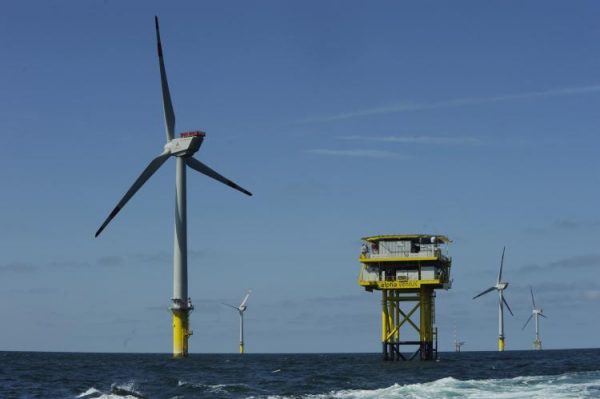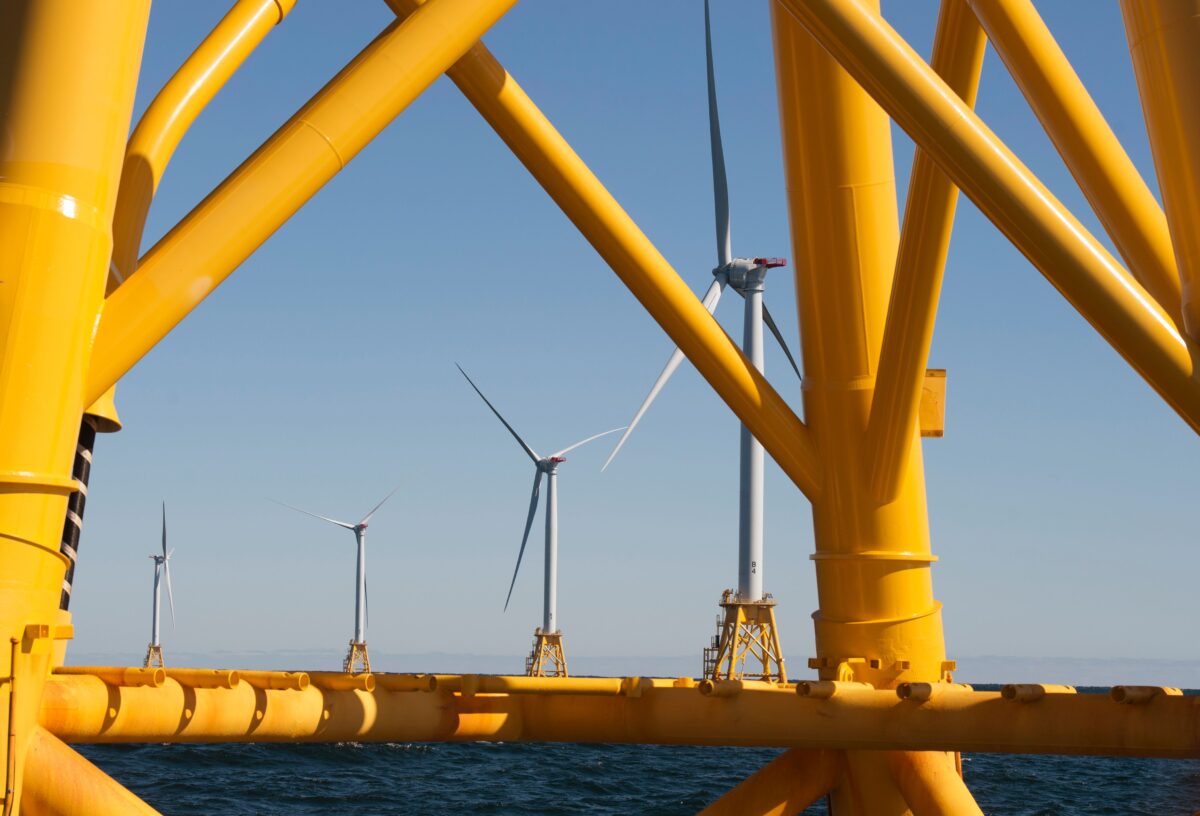


An increase in the failure of wind turbine components and the subsequent financial fallout is creating uncertainty about the true sustainability of an industry campaigning for green energy.
Siemens Energy announced on June 22 that it would be withdrawing its profit assumptions and initiating a technical review of Siemens Gamesa’s onshore wind farm, which could cost over 1 billion euros ($1.1 billion).
“This is a disappointing, bitter setback,” Siemens Gamesa CEO Jochen Eickholt said in a June conference call. “The quality problems go well beyond what had been known hitherto, in particular in the onshore area.”
The mechanical problems could affect 15 to 30 percent of the company’s wind turbine farms and take several years to repair.
The day after the announcement, Siemens Energy’s shares dropped over 37 percent.
The company said it expected challenges to “ramp up” offshore as well.
Siemens Energy is a subsidiary of the German conglomerate Siemens. Siemens Energy’s wind farm business, Siemens Gamesa, is a global company based in Spain that constructs onshore and offshore turbines in Europe and the United States.
The company began an investigation into a damaged turbine at the Santo Agostinho wind farm that French energy company Engie SA is building in the northeast of Brazil, Bloomberg reported.
The installation—which is part of Siemens Gamesa’s new 5.X model of onshore wind farms with blades as long as 262 feet—has faced numerous quality control issues and has been shut down for the investigation.
Since Siemens Gamesa’s announcement, a spokesperson confirmed to Recharge on July 5 that a blade had broken at the Santo Agostinho wind farm.
Media outlets and spokespersons blame the issues on increasing costs and decreasing availability of raw materials caused by the COVID pandemic and the Russia-Ukraine conflict, which has left competing companies with challenges in meeting deadlines while rattling the confidence of investors.
Siemens Energy CEO Christian Bruch said in the June conference call that the setback is “more severe than I thought possible.”
“Siemens Gamesa will incur high losses this year and will take longer to reach an appropriate level of profitability,” Mr. Bruch said. “We also have to see that we have an urgent requirement to fix the corporate culture. Too much has been swept under the carpet.”
In 2022, Siemens Gamesa announced a layoff of 2,900 employees, with further cuts predicted, EnergyWatch reported.
“It is never easy to make such a decision, but now is the time to take decisive and necessary actions to turn the company around and ensure a sustainable future,” Mr. Eickholt said. “We need to build a stronger and more competitive Siemens Gamesa to secure our position as a key player in the green energy transition.”
Nicholas Green, head of industrial technology at the global asset management firm AllianceBernstein, told CNBC that the rate of expansion has pushed wind energy into “uncharted territory” that has led to “an industry-wide issue.”
“It wasn’t that Siemens Gamesa is a bad operator as such, it’s that actually some of the normal protocols and time in use, operational data in use, is relatively limited,” Mr. Green said.
In addition to the availability of materials, the rapid expansion is not only creating challenges for supply and demand but also engineering.
Christoph Zipf, a spokesman for WindEurope, told CNBC that 20 years ago, a normal wind turbine would have a capacity of 1 million watts, while today they are testing at 15 megawatts.
“This means that turbines have become bigger as well, posing challenges to components (quality, materials, longevity),” Mr. Zipf wrote in his statement.
Mr. Zipf maintained that these issues aren’t a foreshadowing of an industry-wide collapse, however, stating that “the problems at Siemens Gamesa are limited to Siemens Gamesa.”
“Big turbine failures are extremely rare given the number of turbines installed in Europe already,” Mr. Zipf said.
There are others who claim turbine failures are in fact more frequent and underreported, however.
Lisa Linowes, founder and executive director of WindAction, told The Epoch Times in an email statement that turbine failures are more prevalent than people are made aware.
“Not all failures are picked up by the press, so we don’t know the degree of underreporting, however, there is good reason to believe the underreporting is significant,” Ms. Linowes said. “There have been clear signals from the industry dating back to 2007 that component failure [and] structural failure are not isolated but systematic and industry-wide.”
Ms. Linowes pointed to a New York Times article published in 2007 on the mechanical problems with turbines.
The availability of large government subsidies led to a race to construct wind turbines and capitalize on the fast-growing industry, leading to shortcomings in the technology.
Engineers complained of limited time to test prototypes, demand exceeding supply, and companies showing no interest in slowing down to create more efficient technology, instead just making bigger facilities.
“Since this article was published, there’ve been a host of collapses where towers buckled or complete collapses of turbines,” Ms. Linowes said.
Sixteen years ago, when the article was published, Ms. Linowes said the United States had about 6,000 operating towers.
Today, there are about 65,000 to 70,000 towers, she said.
During a visit to the Block Island Wind Farm in Rhode Island in late May, Secretary of Energy Jennifer Granholm praised America’s first offshore wind farm as a model that should be followed throughout the rest of the country, The Providence Journal reported.
“We want to replicate this, even bigger, all up and down the Atlantic seaboard, but also in the Pacific and in the Gulf of Mexico and in the Great Lakes,” Ms. Granholm said. “We want to be able to generate clean energy all across America.”
However, the Block Island Wind Farm, like other installations, has faced multiple problems.
Meghan Lapp is a representative for a commercial fishing company in Rhode Island and also works in fishery management. She told The Epoch Times that the installation is “rarely working” and has frequent maintenance issues.
“A couple of years ago, four out of five of them went offline for months because they have stress fractures in the rotors,” Ms. Lapp said. “This year, one of them will be offline all summer for repair. It’s been one disaster after another.”
WindAction was formed in 2006 to investigate the wind industry and its impact on wildlife, the natural environment, and human health.
The organization has collected articles since 2004 reporting on structural failures.
Because the industry is subsidy-driven, Ms. Linowes said, there’s a rush to get turbines raised as quickly as possible before the subsidies run out.
“With the passage of the Inflation Reduction Act, some of that pressure might moderate in the future, but the damage is built into the existing fleet of operating and newly launched turbines,” Ms. Linowes said. “To maximize the subsidies, turbine manufacturers have been pushed to build taller turbines with larger megawatt capacities and at lower costs. There may well be shortcuts taken in the manufacturing and erection processes and sloppy work by field technicians.”
Just as was warned in 2007, the increasing size of these turbines could be shooting past their mechanical capabilities, she said.
“Modern onshore turbines now stand over 600 feet tall with rotor diameters greater than 130 meters,” she said. “There is a lot of stress and as you go higher, the turbulence increases.”
The taller they get, the more they reach into the unknown of how they will perform.
Along the Atlantic coast, 3,500 turbines are proposed that will stretch across 2.2 million acres of coastal waters.
Cindy Zipf, executive director for Clean Ocean Action, told The Epoch Times in a previous report that these turbines will be up to 1,046 feet tall—as tall as the Chrysler Building, with one blade surpassing the height of the Statue of Liberty.
Ms. Linowes points out that the subsidies in the United States run for the first 10 years of turbine service.
“By the 10-year mark, the project owners and investors have recouped their investment and earned the expected return,” Ms. Linowes said. “Consequently, the project is of less value. The turbines are older, and we know from studies by the U.S. government that older turbines become less efficient.”
According to a 2020 report by Berkeley Lab, abrupt changes in performance happen after the first 10 years of operation, coinciding with when U.S. wind companies lose eligibility for production tax credits (PTC).
The tax credits were initiated by the Energy Policy Act of 1992 to incentivize the development of wind installations.
An article published in the scientific journal Joule (pdf) said there is a notable coincidence in the timing between the drop in performance and the eligibility deadline for production tax credits.
“It suggests that maintenance and operating strategies change when projects lose access to the sizable tax benefits afforded by the PTC,” the report stated.
This reaches a point where the cost of maintenance isn’t worth it, Ms. Linowes said.
“In 2019–2020, GE experienced a series of turbine collapses which were reported as being caused by different sources,” Ms. Linowes said in her email. “A single point of failure leading to the collapse of multiple turbines would suggest a common cause in the design, manufacture, or assembly that could be investigated/resolved.”
Multiple issues stemming from multiple points of failure, however, suggest that there is a problem with the overall process, including the design, the manufacturing of the equipment, and an inadequate grasp of what is required for proper operation, Ms. Linowes said.
“Given the recent reporting from Siemens, the issue of turbine failure appears more systemic than isolated,” Ms. Linowes said. “This, combined with the loss in subsidies and rising maintenance costs for older turbines, means we are likely to see more failures from here on.”


